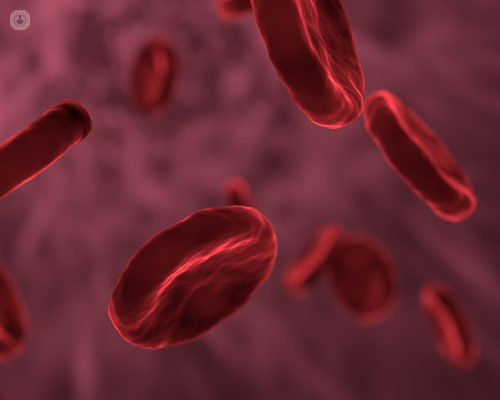PRP (platelet-rich plasma) regenerative treatment for joint pain
Written in association with:Platelet-rich plasma (PRP) regenerative treatment aims to alleviates joint pain and promote tissue healing. PRP is derived from the patient’s own blood and is rich in platelets, which contain growth factors that are crucial for tissue repair and regeneration. Here to tell us more about this treatment is leading pain management specialist Dr Deepak Ravindran.

How does PRP work?
PRP involves taking a small amount of blood. This is then processed in a centrifuge in order to concentrate the platelets. Then, the platelet-rich plasma is injected directly into the affected joint, such as the knee, shoulder or hip. The high concentration of growth factors in PRP accelerates the body’s natural healing process, reduces inflammation and promotes tissue repair in the damaged joint.
Who can benefit from PRP treatment?
PRP is often used to treat joint pain resulting from:
- Osteoarthritis
- Tendon injuries
- Ligament injuries
- Cartilage damage
It’s particularly useful for patients who want to avoid or delay surgery, prefer a less invasive treatment option, or are not responding well to conventional treatments like corticosteroids or pain medication.
What are the benefits of PRP treatment for joint pain?
- Natural healing: Since PRP is derived from the patient’s own blood, the risk of allergic reactions or side effects is minimised.
- Reduced inflammation: PRP helps reduce inflammation, which can significantly decrease pain and improve joint function.
- Tissue regeneration: PRP promotes the repair of damaged tissues in the joint, which can help restore mobility and function.
- Minimal downtime: PRP is a minimally invasive procedure with little to no downtime, allowing patients to return to their daily activities relatively quickly.
What can I expect during and after PRP treatment?
PRP injections are typically performed on an outpatient basis and take about 30 to 60 minutes. After the procedure, patients may experience mild pain or swelling at the injection site, but this usually subsides within a few days. Full recovery and noticeable improvement in joint pain may take a few weeks, and multiple sessions may be required depending on the severity of the condition.
PRP therapy offers a promising option for those suffering from joint pain, allowing for improved function and pain relief without the need for more invasive treatments like surgery. However, it’s essential to consult with a medical professional to determine if PRP is the right treatment for your specific condition.
Considering PRP treatment for joint pain? Arrange a consultation with Dr Ravindran via his Top Doctors profile.


